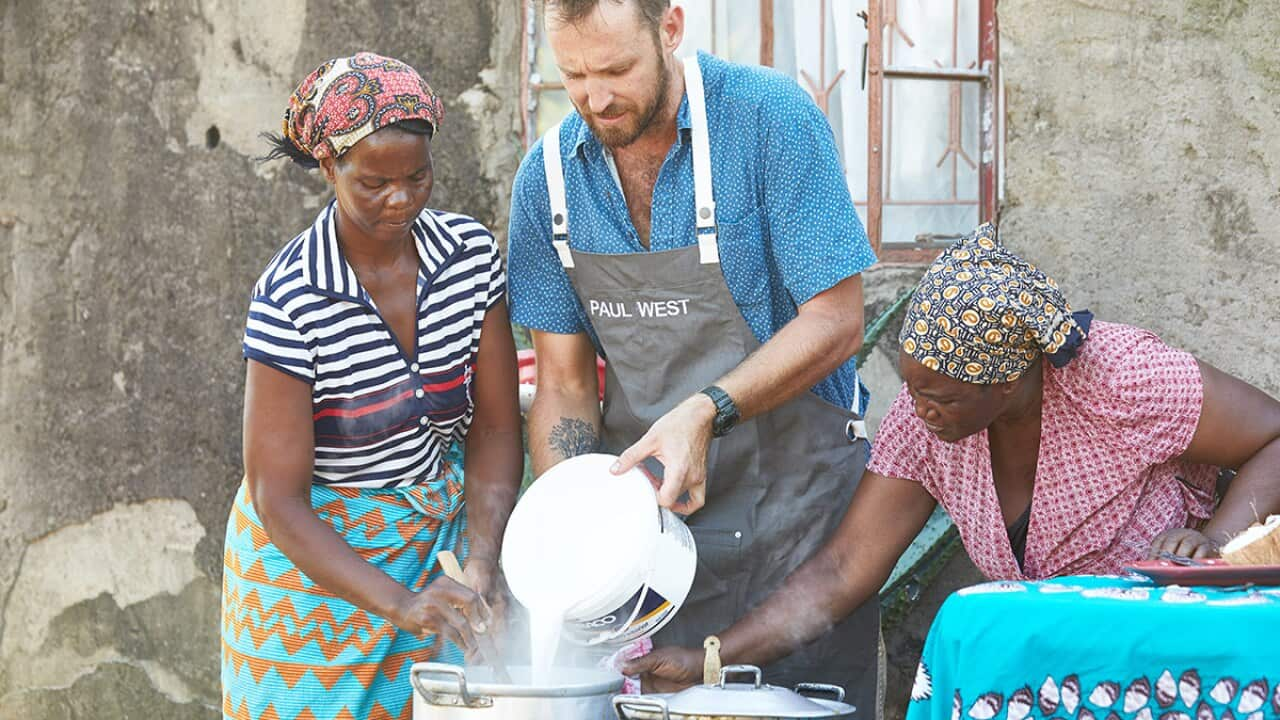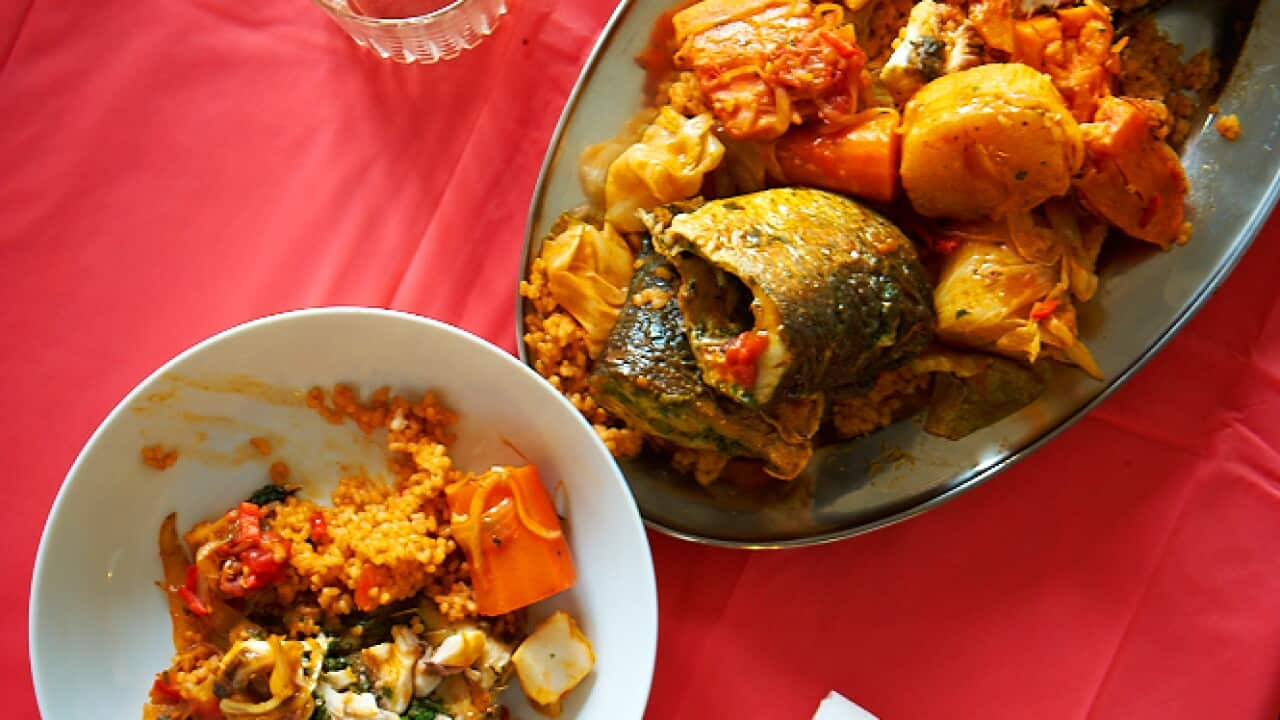--- See Sarah Graham making a classic cassava dish and much more in Sarah Graham's Food Safari, weekdays at 4pm and then via SBS On Demand ---
Cassava, also known by other names including manioc, yuca and kamoteng kahoy, is used in a wide range of dishes in many corners of the world. The roots and leaves lend themselves to savoury dishes, and two kinds of flour are also made from the plant: cassava flour, which is made from the whole root, and tapioca flour, made from a starchy pulp extracted from the root, as are tapioca balls (aka tapioca pearls).
Here and now, we're diving into the cassava side of this versatile veg, but if you'd like to explore tapioca flour, head to discover it in everything from to , and find more tapioca recipes , too.
Depending on where you live you might find cassava sold fresh at markets or greengrocers; frozen cassava and cassava leaves at specialist retailers; and cassava flour at health food stores and some specialist supermarkets.
Cassava is often boiled or fried, but a light grill turns cassava slices into the perfect bases for little lamb patties in these little canapes, which Ainsley Harriott whipped during his last visit to Australia.

Cassava and lamb patties. Source: Ainsley's Market Menu
Luiza Gomes's recipe for this hearty seafood dish, which hails from the Bahia region of northern Brazil, is a celebration favourite. It's a comforting dish of prawns, cassava and coconut.

Bobó de camarão Source: Sharyn Cairns
A one-pot wonder, this key to this flavourful stew is a homemade African seasoning. This dish can be made with chicken or beef (or a combination).

Liberian cassava leaf and meat Source: Amy Brown
Matapa is a popular Mozambican stew. Here, in the version Sarah Graham learns to make with local chef Sonia Induna in Sarah Graham's Food Safari, fresh crab (prawns make a good alternative) is slowly simmered in a cassava, peanut and coconut sauce. Graham suggests spinach leaves if you can't get cassava leaves.

Crab and coconut matapa Source: Sarah Graham's Food Safari
This simple recipe, with just five ingredients, is a popular preparation of cassava root in Mozambique. Baby spinach leaves can be used instead of the balsam apple leaves.

Cassava with balsam apple (xiguinha de cacana) Source: The Good Cooks
Frozen cassava turns into good chips - even better served up with the salsa huancaina also in the recipe, an unusual combination of onion, garlic chilli, feta, evaporated milk and cracker biscuits.

Cassava chips Source: Food Safari
Derived from the word feijao, meaning 'beans', this hearty stew was introduced bears some similarity to a French cassoulet. Over the decades, this national dish of Brazil has evolved to include sun-dried and smoked meats, as well as the traditional salted pork offcuts and an array of side dishes such as rice, greens and fresh oranges, and condiments like toasted cassava flour (farofa).

Feijoada with farofa Source: Feast Magazine
Here's another take on Brazilian beans. The story of the name of this popular dish comes from cattlemen known as tropeiros. On long journeys, they had to carry most of their food with them. The essentials – beans, dried and salted meat, and cassava flour – were typically combined to create the iconic feijão tropeiro. Here, cassava flour one of the key ingredients giving this dish it's distinctive texture and taste.

Beans with fried bacon and scrambled eggs (feijão tropeiro) Source: SBS
Cassava cooked with coconut cream comes together with cooked tapioca pearls and banana to make this sweet, creamy Vietnamese dessert.

Tapioca pudding with cassava and banana Source: Feast / Alan Benson
"Also known as cassava bibingka, this Filipino classic is characterised by a springy, elastic texture. It is also very easy to make. Stock up on pre-grated frozen cassava from Asian grocery stores, then thaw when you are ready to begin the recipe." says Yasmin Newman of this Filipino dessert. The cassava cake is finished off with a coconut-caramel topping layer. In accordance with the Food Standards Australia New Zealand (FSANZ), cassava and bamboo shoot available in Australia and New Zealand are safe to eat provided you prepare them properly. These foods contain cyanogenic glycosides; chemicals that can be broken down to release hydrogen cyanide, which can be harmful to consumers. For more information please .
In accordance with the Food Standards Australia New Zealand (FSANZ), cassava and bamboo shoot available in Australia and New Zealand are safe to eat provided you prepare them properly. These foods contain cyanogenic glycosides; chemicals that can be broken down to release hydrogen cyanide, which can be harmful to consumers. For more information please .

Cassava cake Source: Yasmin Newman






